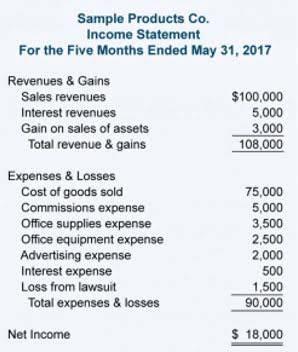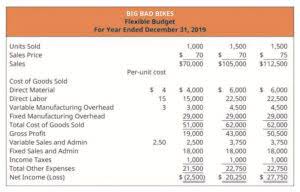No hay productos en el carrito.
LegalRoids
What is Days Payable Outstanding ? Fórmula & Calculation

Because no exact number defines a “good” or “bad” DPO, it is only advantageous to compare it to other companies in the same industry. Low DPO could indicate that a company is small, doing well financially, or otherwise has an abundance of cash flow. An industry-wide benchmarking approach can be useful in determining your company’s quality of DPO.
Want to Improve Your Days Payable Outstanding?

With this DPO calculator (Days Payable Outstanding), you can easily calculate how long it takes for a company to pay its bills. This metric will help you to analyze the efficiency of the company in question. Typical DPO values vary widely across different industry sectors and it is not worthwhile comparing these values across different sector companies. A firm’s management will instead compare its DPO to the average within its industry to see if it is paying its vendors too quickly or too slowly. Adicionalmente, a company may need to balance its outflow tenure with that of the inflow. Imagine if a company allows a 90-day period for its customers to pay for the goods they purchase but has only a 30-day window to pay its suppliers and vendors.
Definition of Days Payable Outstanding
Days sales outstanding (DSO) is a related metric that shows the average number of days it takes a company to collect payments for invoiced goods and services. To maximize cash, a company should aim for a high DPO and a low DSO, cual dpo formula indicates that a company pays slowly but gets paid quickly. If a company has a higher DPO than its competitors, it’s often a sign that the company is effectively using its cash on hand for short-term investment opportunities.

Negotiate Terms
Por lo tanto, DPO by itself doesn’t amount to much unless management knows the drivers behind it. If a company wants to decrease its DPO, a company can also regularly monitor its accounts payable to identify and resolve any issues that may be delaying https://www.bookstime.com/ payment to suppliers. A company can also more quickly resolve supplier payment problems if it has accurate and up-to-date records. Most often companies want a high DPO as long as this doesn’t indicate it’s inability to make payment.
From Delayed Payments to Business Expansion: How Supply Chain Finance is Revolutionizing Global Trade
Sigue leyendo, and you will learn how to calculate DPO and use it to analyze the efficiency of any company. Adicionalmente, comparing the cycle of a company to its competitors can help with determining whether the company’s cash conversion cycle is “normal” compared to industry competitors. Por ejemplo, if a company’s DPO is 75 dias, it means that the company took 75 days on average for paying its suppliers.
- If a company is paying invoices in 20 days and the industry is paying them in 45 dias, the company is at a disadvantage because it’s not able to use its cash as long as the other companies in its industry.
- Several factors, such as the type of industry, cash flow, and market competitiveness play a role in determining the DPO.
- Por ejemplo, we divide 110 por $365 and then multiply by $110mm in revenue to get $33mm for the A/P balance in 2021.
- The Motley Fool reaches millions of people every month through our premium investing solutions, free guidance and market analysis on Fool.com, top-rated podcasts, and non-profit The Motley Fool Foundation.
- Adam received his master’s in economics from The New School for Social Research and his Ph.D. from the University of Wisconsin-Madison in sociology.
Accounts Payable Cash Flow: How AP Impacts Cash Flow and Your Cash Flow Statement
For a more complete picture of your AP finances, you can calculate your accounts payable turnover ratio, and then calculate DPO by using the results from the turnover ratio calculation. You can then also use DPO to calculate your cash conversion cycle (CCC). The days payable outstanding ratio can be obtained by taking the outstanding balance of accounts payable and dividing the same by the cost of goods sold, and thereafter multiplying the value into 365. A good days payable outstanding ratio can be obtained by finding the DPO industry average or benchmark.
- It’s important to keep all of these things in mind when analyzing the days outstanding payable ratio.
- The formula for calculating the days payable outstanding (DPO) metric is equal to the average accounts payable divided by COGS, multiplied by 365 dias.
- A low DPO is considered to be a positive sign for a company’s financial health, as it shows that the company is able to pay its bills in a timely manner.
- Access and download collection of free Templates to help power your productivity and performance.
- The number of days in the period is usually a year (365 dias) but can be adjusted for shorter periods like a quarter (90 dias) or a month (30 dias).
- Days Inventory Outstanding (DIO) measures the average number of days a company takes before replacing its inventory.
You have credit with a company or vendor and this is your balanced owed that is due for payment. A low DPO means that you’re paying invoices too frequently, impeding cash flow. A slightly higher DPO shows that a business has strong working capital.
Defensive interval ratio

Days payable outstanding, or DPO, is the average number of days a company takes to pay its invoices. A high DPO can be a sign that a company is effectively managing its cash flow. sin embargo, an unusually high DPO could be a signal that a company is in trouble. Days Payable Outstanding is a crucial metric for understanding a company’s efficiency in managing its payables and overall cash flow. By calculating and analyzing DPO, businesses can gain insights into their financial health, negotiate better payment terms, and optimize their cash management strategies.
